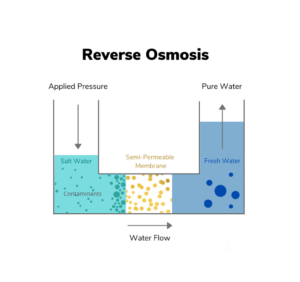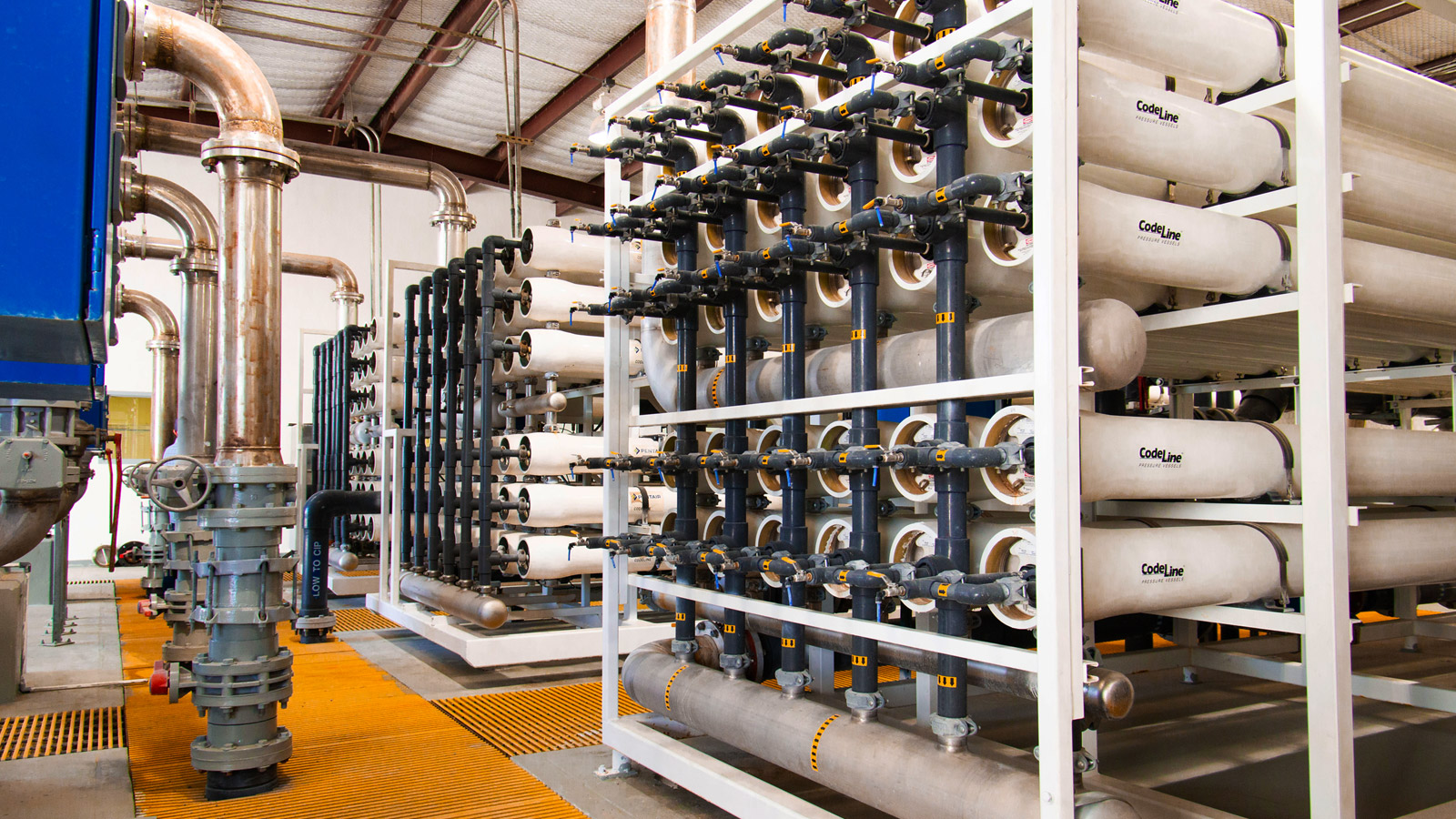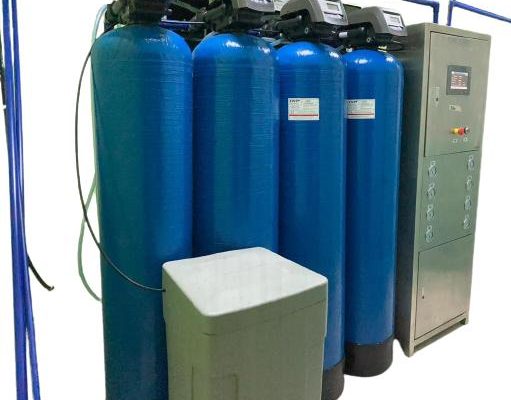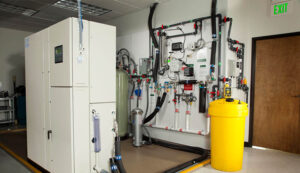Reverse osmosis water treatment systems are becoming increasingly popular as more people are concerned about the quality of their drinking water. Reverse osmosis (RO) is a technique that eliminates pollutants from water by pressuring them through a semi-permeable membrane. The membrane allows water molecules to pass through while blocking larger molecules such as contaminants.
RO systems are widely used in households, industries, and municipalities for water purification. They effectively remove contaminants, including sediment, chlorine, lead, bacteria, and viruses. In this blog, we’ll look at reverse osmosis water treatment systems’ advantages and how they function.
How does reverse osmosis work?

A semipermeable membrane is used in reverse osmosis to extract contaminants from water. Water molecules can flow across this membrane, but pollutants, including minerals, bacteria, viruses, and dissolved solids, cannot.
As water passes through the membrane, the pressure forces the water molecules to move through the tiny pores, leaving impurities too large to pass through. This purified water is then collected in a storage tank for later use. Typically, reverse osmosis systems have multiple stages of filtration, each designed to remove specific types of contaminants. For example, some systems include pre-filters that remove sediment and chlorine, while others have post-filters that add minerals to the water for better taste.
While reverse osmosis is a very efficient way to purify water, it’s crucial to remember that not all RO systems are identical. The efficacy and efficiency of the system can be affected by the membrane’s quality, the number of filtration stages, and the design of the entire system. Researching and picking a reverse osmosis water treatment system tailored to your requirements is crucial. This may entail considering elements like your household’s size, the caliber of the water supply in your area, and your financial situation.
Reverse osmosis water treatment systems are, in general, an excellent option for anybody who wants to make sure their drinking water is secure, hygienic, and free of contaminants.
The ability of reverse osmosis to remove a wide spectrum of pollutants from water is one of its primary advantages. As a result, it is an efficient instrument for creating clean drinking water as well as for industrial uses such as pharmaceuticals and electronics production. It is crucial to remember, however, that reverse osmosis has limits and may need extra treatment processes to create high-quality water.
Benefits of reverse osmosis water treatment systems

- Better smell and taste: Reverse osmosis water treatment systems enhance the flavor and aroma of water by eliminating impurities that may otherwise detract from its quality. As a result, people are more likely to like drinking water and staying hydrated.
- Several contaminants are eliminated by RO systems, like sediment, chlorine, lead, bacteria, and viruses. This makes water safe to drink and lowers the chance of becoming sick.
- Cost-effective: In comparison to other water treatment systems, reverse osmosis systems are less expensive. With good care, they may survive for many years with little upkeep.
- Eco-friendly: As RO systems don’t use chemicals to clean water, they are environmentally beneficial. This lessens the adverse effects of water treatment on the environment and improves environmental safety.
- RO systems are simple to install and can be used in commercial, residential, and industrial settings. They may be fitted in a separate unit or under the sink, taking up very little space.
- Reduces costs: You can spend less on bottled water and lessen its environmental impact by adopting a RO system. This can also aid in lowering plastic waste, a significant ecological issue.
How to Choose The Right Reverse Osmosis Water Treatment System
There are several factors to consider when choosing a reverse osmosis water treatment system:
- Better smell and taste reverse osmosis water treatment systems enhance the flavor and aroma of water by eliminating impurities that may otherwise detract from its quality. As a result, people are more likely to like drinking water and staying hydrated.
- Several contaminants are eliminated by RO systems, like sediment, chlorine, lead, bacteria, and viruses. This makes water safe to drink and lowers the chance of becoming sick.
- Cost-effective: Reverse osmosis water treatment systems are less expensive than other water treatment systems. With good care, they may survive for many years with little upkeep.
- Maintenance: While choosing reverse osmosis water treatment systems, maintenance requirements should also be taken into account. Choose a system that is simple to maintain and has simple-to-replace filters and membranes. Choose a system that won’t need a lot of time and effort because routine maintenance is necessary to maintain the system functioning properly.
- Certification: Lastly, picking a system approved by a suitable authority like NSF International is crucial. You can have confidence that you are investing in a high-quality water treatment system since certification assures that the system complies with strict performance and safety criteria.
You can guarantee that you and your family will have access to clean, secure, and consistent drinking water for years by considering these considerations and selecting a high-quality reverse osmosis water treatment system that suits your needs.
Conclusion
Systems for treating water by reverse osmosis are an effective way to filter water and eliminate contaminants. They are popular because they are inexpensive, environmentally advantageous, and easy to install in homes, companies, and communities. By choosing a high-quality reverse osmosis water treatment system, you can improve the taste and safety of your drinking water while saving money and reducing your effect on the environment.
You must frequently test your water to ensure it meets your safety and purity standards because no water treatment system can totally remove pollutants. This is essential if you reside somewhere where lead or arsenic levels in the water are high.
Reverse osmosis water treatment systems are a reliable and inexpensive technique to clean water and eliminate impurities. They provide several advantages, including enhanced flavor and odor, pollutants removal, cost-effectiveness, environmental, adaptability of installation, and possible cost savings. When selecting a system, consider things like membrane quality, capacity, price, required maintenance, and certification. You can benefit from clean, secure, and pleasant drinking water for years with the correct system.




